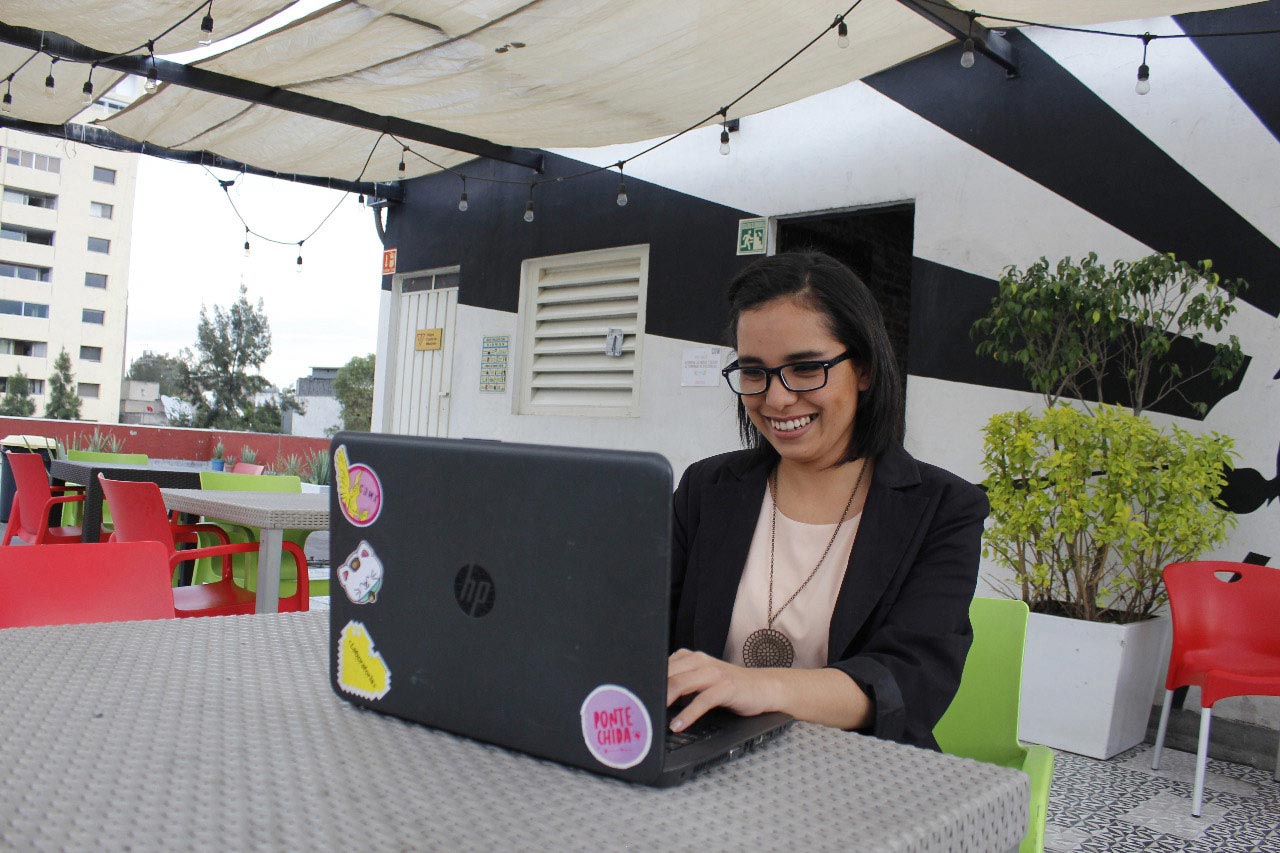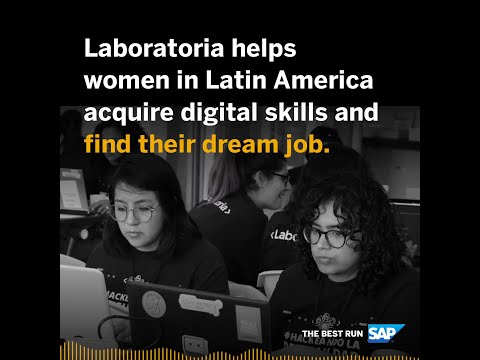If the gender gap in Mexico’s workforce was closed, it could increase the country’s GDP by 70 percent. SAP and Laboratoria aim to fix this — and train disadvantaged women to participate in the digital economy.
“I was one of two women that sat on the regulatory body that monitors Mexico’s telecom industry. It was a very masculine sector and a difficult environment to navigate,” says Dr. Maria Elena Estavillo, an internationally recognized expert in telecommunications oversight and anti-trust issues.
As a result of her experiences, Estavillo founded Conectadas MX, a group that advocates for women’s employment and advancement to the c-suite in information and communication technologies (ICT) professions across Mexico. “Most of these issues are global, but Mexico is very challenged in this aspect,” she says. “When we compare pay cap or participation in the workforce, we lag behind many countries, including those in Latin America.”
To fight this, Conectadas offers mentorship and campaigns for recruiting policies and procedures that encourage women’s participation in the ICT workforce.
 Estavillo is not alone and the problems she has identified run deep. Laboratoria is a not-for-profit organization that helps women enter the digital economy with training and job placement support. In collaboration with SAP, the organization produced a study, “The future is diverse: Women in technology industries in Mexico.” The report found that Mexico falls behind other countries in several key categories.
Estavillo is not alone and the problems she has identified run deep. Laboratoria is a not-for-profit organization that helps women enter the digital economy with training and job placement support. In collaboration with SAP, the organization produced a study, “The future is diverse: Women in technology industries in Mexico.” The report found that Mexico falls behind other countries in several key categories.
Araceli Campos, Laboratoria’s country manager for Mexico, shares, “Machismo is very present in the workforce. We have very strong anti-discrimination laws but there’s a lack of compliance.” For example, during interviews men ask women if they are pregnant or plan to start a family soon. In fact, 35 percent of the country’s population believes men are more suitable for jobs in science, technology, engineering and mathematics (STEM), according to a study published by the National Autonomous University of Mexico (UNAM).
Furthermore, while Mexican women have achieved parity in educational achievement, the study reports, “very few women are completing university degrees in technology.” Even when women focus on STEM, the quality of Mexico’s math and science education — and education overall — is comparatively low, receiving a score of 2.8 out of seven from the World Economic Forum. The impact? Mexican women are less prepared than men to enter the technology sector.
As a result of cultural biases and subpar education, women are underemployed, particularly in tech-related jobs. Campos says, “What makes Mexico unique is that overall women’s participation in the labor market is 47 percent, whereas men are at 83 percent. And 31 percent of women under 24 don’t participate at all.”
To put it in perspective, women comprise 70 percent of the workforce in other Organization for Economic Co-operation and Development (OECD) countries. It gets worse when it comes to tech: Across Latin America, women represent one in 10 technology workers; in Mexico, it is one out of eight.
For Campos, this means women miss out on a huge economic opportunity: “By 2025, it’s estimated that we’ll need 1.25 million developers in Latin America. Laboratoria is founded on the belief that we need to build a world that equally distributes opportunities for the digital age.”
Moreover, excluding women results in high costs to Mexico’s economy and private sector. “If the gender gap in Mexico’s workforce was closed, it could increase the GDP for Mexico by 70 percent,” Campos says.
SAP agrees that companies suffer without diversity, which is why it partnered with Laboratoria to advance women’s standing in STEM and co-create the study. Raquel Macias heads up Corporate Affairs and Corporate Social Responsibility (CSR) for SAP Mexico. She says, “Without women, it’s hard to build products that appeal to a broad base of consumers. It’s been well documented that companies with more women have better, more innovative cultures and higher profits.”

Steps Companies Can Take to Bolster Women’s Participation in the Digital Economy
To make this change, Laboratoria partners with companies like SAP to create lasting impact. “We realized for systemic change to happen, working with women was only part of it,” Campos says. “We also needed to work with the companies, because it involves a change of mindset, change of culture.”
What are some concrete steps technology companies can take to be more inclusive and equal? Campos recommends that companies actively hire women. “People say ‘We posted but no women applied.’ But you need to look at the wording of the job posting – men apply if they meet half the criteria but women won’t,” she says, “You need to go the extra mile.”
Moreover, companies must establish policies to retain and develop talent. But for new rules to work, a new culture must take root.
“We need a different culture inside companies and to build the narrative for why diversity matters,” Campos explains, which includes offering tools to help leaders navigate the complexity that diversity brings and encouraging them to keep an open mind. “Executives need to be okay with vulnerability, with not knowing all the answers as we figure out this massive change.”
Both SAP and Laboratoria recommend that all actors need to come together including the media, government, non-governmental organizations (NGOs), and private companies. Each plays an important role in creating lasting change. Campos points to its relationship with SAP and the SAP CSR team as evidence.
“SAP shows real commitment to this issue,” she says. “And as a leader in gender diversity, SAP influences and inspires the industry. That means a lot of people will follow – and that is huge.”
Images via Laboratoria



